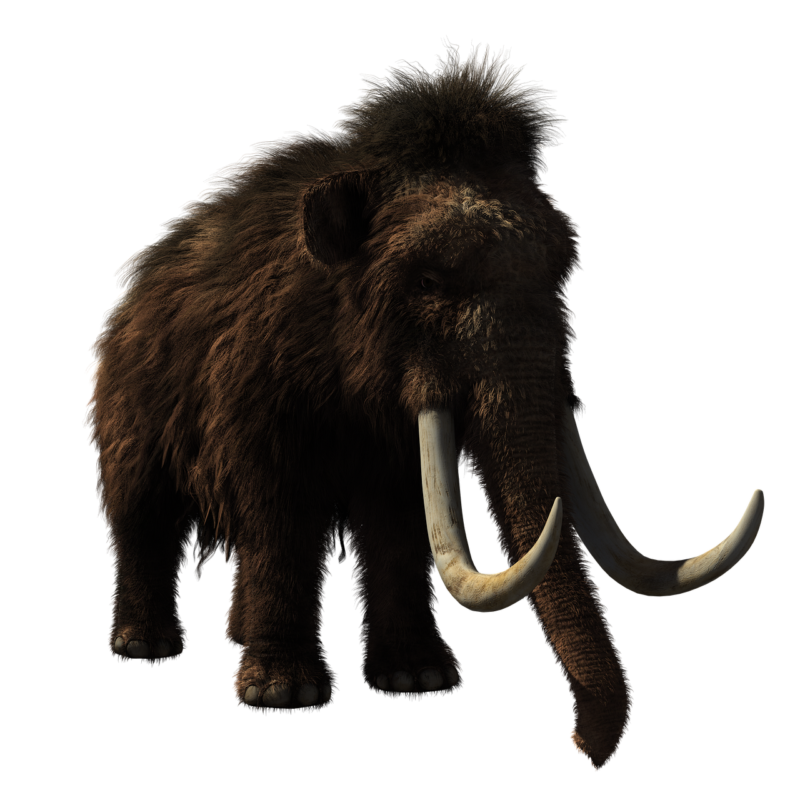The End of the Ice Age Giants: Why Mammoths and Other Megafauna Went Extinct
November 14, 2024

The Ice Age was a time of magnificent giants. Across the vast, icy landscapes roamed colossal creatures such as woolly mammoths, saber-toothed cats, and giant ground sloths. These megafauna were the apex of prehistoric life, dominating their environments and mesmerizing paleontologists with their sheer size and adaptation. However, as the Ice Age came to an end around 10,000 years ago, many of these impressive beings vanished from the Earth. But what led to the extinction of these magnificent creatures? In this article, we will explore the factors contributing to the extinction of Ice Age giants and the lessons we can learn from their demise.
1. The Climax of the Ice Age
The Pleistocene Epoch, which lasted from about 2.6 million to 11,700 years ago, was marked by glacial and interglacial periods. During this time, the world experienced extensive ice coverage, shaping ecosystems and influencing climate.
One of the most fascinating aspects of the Pleistocene was the diverse array of megafauna that adapted to its harsh conditions. Woolly mammoths, with their thick coats and long, curved tusks, grazed on the cold grasses, while mastodons roamed the forests. These creatures showcased incredible adaptations, allowing them to survive in freezing temperatures. However, as the climate warmed in the late Pleistocene, significant changes started to unfold.
Changes to their environments were brought about by melting ice sheets, resulting in rising sea levels and altering land features. The disappearance of vast grasslands and the fragmentation of habitats significantly disrupted the habitats of these massive animals, limiting their food sources.
2. Human Impact: The Apex Predator
While climate change played a pivotal role in the extinction of Ice Age giants, the arrival of humans cannot be overlooked. Early humans migrated to different parts of the globe and brought with them both advanced hunting techniques and the ability to manipulate environments for agricultural purposes.
Archaeological evidence suggests that as humans spread across the continents, they increasingly hunted large prey. The ability to hunt cooperatively allowed early humans to target formidable animals, leading to significant population declines.
But hunting was not the sole factor. The rise of agriculture transformed landscapes, leading to habitat loss for many species. As humans settled and cleared land for farming, this further endangered the already vulnerable megafauna. Overhunting combined with habitat destruction created a substantial impact on the numbers of these animals.
Surprisingly, some studies indicate that specific megafauna, like the American mastodon and the woolly mammoth, might have been well adapted to coexist with early human societies. However, the alien combination of climate change and intensified hunting was likely too much for their populations to sustain.
3. Direct and Indirect Consequences of Extinction
The extinction of megafauna during the late Pleistocene had profound ecological consequences. Large herbivores play an essential role in their ecosystems, influencing plant communities and creating habitats for other species. Their absence sparked cascading effects that rippled through the food web.
Without large herbivores, shrublands and forests expanded, leading to changes in vegetation and the displacement of other species. The disappearance of predators also left a void in some ecosystems, allowing for the overpopulation of smaller mammals, bugs, and plants, which can lead to shifts in biodiversity.
Moreover, the extinction of these giants led to the loss of unique evolutionary lineages. Many of these species have interesting adaptations and traits that may have offered clues to survival in harsh climates or environments. By losing them, we lost invaluable insight into evolutionary processes and ecological balance.
4. Modern Implications: Learning from the Extinctions
As we navigate the current age of rapid climate change and biodiversity loss, the extinction of Ice Age giants serves as a poignant reminder of the fragility of ecosystems. Understanding the factors that led to their demise enhances our capacity to preserve current endangered species, emphasizing the interconnectedness of climate change and habitat destruction.
Conservation efforts today focus on habitat restoration, which includes understanding the consequences of land use and human impact on natural systems. This understanding is crucial for creating sustainable ecosystems that can endure climatic changes and human pressures.
The extinction of megafauna urges us to respect our planet and the intricate balance of life. The experience of these giants illustrates that species survival hinges on a complex interaction of factors, including climate, habitat, and human behavior.
5. Conclusion: The Echoes of the Past
The Ice Age giants, from majestic woolly mammoths to colossal saber-toothed cats, represent a time of extraordinary diversity and complexity. Their extinction invites reflection on the intricate balance of life and the consequences of environmental changes and human actions. As we contend with our present environmental challenges, we owe it to these incredible creatures and ourselves to make informed choices that prevent history from repeating itself.
In remembering the legacy of Ice Age giants, we can draw valuable lessons regarding conservation, respect for our planet, and responsible stewardship. Let us learn from the echoes of the past and take action for a sustainable future, ensuring that we preserve our natural heritage for generations to come.







